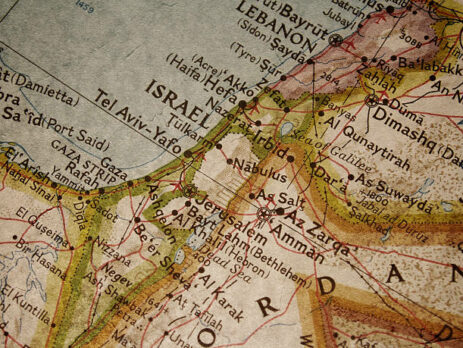Revealing the Hidden Symbolism in Biblical Maps
Maps are not merely tools for navigation; they can also hold deep symbolic meaning. This is particularly true when it comes to biblical maps, which offer more than just geographical information. Embedded within these maps are layers of symbolism that provide insights into the religious, historical, and spiritual dimensions of the biblical narratives. By delving into the hidden symbolism within biblical maps, we can uncover a richer understanding of the texts and the beliefs they convey.
One of the most well-known biblical maps is the map of the Twelve Tribes of Israel. In the Book of Joshua, the land of Canaan is divided among the twelve tribes following the Israelites’ conquest. The positioning of the tribes on the map is not arbitrary; it carries symbolic significance. The arrangement often reflects the order of the tribes’ birth or their ancestral connections. For example, the tribes of Joseph’s sons, Ephraim and Manasseh, are typically placed near each other to represent their fraternal bond. The symbolism within this map reminds us of the unity and heritage shared by the Israelite tribes, reinforcing the idea of a chosen people bound by their common lineage.
The map of the Exodus journey is another example of symbolic cartography. It depicts the Israelites’ escape from Egypt and their forty-year journey through the wilderness. The map often highlights key locations, such as the crossing of the Red Sea, Mount Sinai, and the Promised Land. However, beyond the physical geography, the map conveys a deeper spiritual symbolism. The journey becomes a metaphor for the trials and tribulations of faith, as the Israelites face challenges, testing their commitment to God. The map invites us to reflect on our own spiritual journeys and the obstacles we encounter along the way, encouraging perseverance and trust in a higher power.
The map of Jerusalem, the Holy City, also holds profound symbolic meaning. It often portrays the city with its walls, gates, and prominent landmarks like the Temple Mount and the Western Wall. This map represents not only the physical geography of Jerusalem but also its spiritual significance. The city is considered a center of divine presence and a symbol of unity and peace. It serves as a focal point for the three major Abrahamic religions, Judaism, Christianity, and Islam, and holds deep religious and historical associations. The map invites believers to connect with the spiritual essence of Jerusalem, fostering a sense of reverence, unity, and aspiration for peace.
Furthermore, biblical maps often incorporate symbolism through the use of colors, shapes, and textual annotations. Colors can represent different aspects, such as purity, royalty, or divinity. Shapes may symbolize sacred geometry or represent theological concepts. Textual annotations, such as names of cities or landmarks, may carry historical, cultural, or theological significance. The interplay of these elements creates a multidimensional map that goes beyond the surface-level depiction of physical features.
Studying the hidden symbolism in biblical maps allows us to engage with the texts and the stories they contain in a more profound way. It invites us to see beyond the literal representation of geographical features and uncover the deeper spiritual messages conveyed through these maps. By exploring the symbolic dimensions, we gain insights into the religious and cultural beliefs of the time, as well as a deeper understanding of the values and teachings embedded within the biblical narratives.
In conclusion,
biblical maps are not mere geographical representations but hold layers of symbolism that reveal deeper insights into the texts and the beliefs they convey. By exploring the hidden symbolism within these maps, we can unlock a richer understanding of the religious, historical, and spiritual dimensions of the biblical narratives. The maps serve as visual aids that invite us to reflect on the unity of the Israelite tribes, the trials of faith, the significance of holy sites, and the theological concepts embedded within the scriptures. Delving into the symbolic aspects of biblical maps enables us to engage with the texts in a more nuanced and meaningful way, deepening our connection to the stories and teachings they contain.
The hidden symbolism within biblical maps also invites us to consider the broader significance of maps in our own lives. Just as biblical maps use symbols and metaphors to convey spiritual truths, modern maps can serve as representations of our personal journeys, guiding us through physical and metaphorical landscapes. They can remind us of the importance of direction, perseverance, and the exploration of new territories. By recognizing the power of symbolism in maps, we can develop a greater appreciation for the ways in which maps shape our understanding of the world and our place within it.
In a world where maps are often seen as purely utilitarian tools, the exploration of hidden symbolism in biblical maps offers a fresh perspective. It reminds us that maps can transcend their practical function and become windows into the deeper dimensions of faith, culture, and human experience. By delving into the hidden symbolism within these maps, we can gain a deeper appreciation for the profound wisdom embedded within the biblical narratives and discover new layers of meaning that enrich our spiritual journeys.
As we navigate our own paths in life, let us remember the transformative power of symbols, metaphors, and hidden meanings. Just as the symbolism in biblical maps encourages us to reflect on our spiritual journeys and connect with the sacred, we can seek to imbue our own maps—both literal and metaphorical—with layers of significance that inspire and guide us. In doing so, we can unlock new insights, deepen our understanding, and embark on a transformative exploration of the landscapes—both physical and spiritual—that shape our lives.

